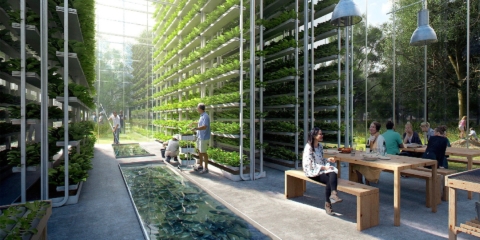Would you like to get notifications from Christian?
Imagine a world where technology makes us more human, rather than less. That’s the promise of Google’s revolutionary PaLM-E, a robot brain that combines language and vision to perform complex tasks autonomously, redefining the landscape of human-robot interactions.
PaLM-E, based on Google’s existing PaLM technology, goes beyond traditional language processing by incorporating sensory information and robotic control. This groundbreaking approach enables robots to adapt to environmental changes and handle interruptions with remarkable resilience, making them more useful in real-world scenarios where unexpected obstacles are common.
By exhibiting emergent capabilities like multimodal chain-of-thought reasoning and multi-image inference, PaLM-E enables robots to reason across different types of information. This leap forward has significant implications not only for robotics but also for human-computer interaction. As we continue to engage with technology in increasingly complex ways, the ability to process language and visual data simultaneously becomes paramount.
PaLM-E’s fusion of language and vision offers a glimpse into a future where technology becomes more human. By performing tasks that once required human intervention, robots equipped with PaLM-E can free human workers to focus on more creative and problem-solving endeavors. As a result, the technology has the potential to transform industries by handling repetitive or hazardous tasks.
However, challenges remain. Ensuring the safety and reliability of robots is crucial, as is fostering natural and intuitive human-robot interaction. While PaLM-E and similar technologies can understand language, they lack the emotional intelligence and social awareness of humans. Addressing these issues requires developing robots that respond to social cues more naturally or adapting human communication styles when interacting with robots.
Despite these hurdles, the potential benefits of PaLM-E and related technologies are undeniable. As we continue to explore the possibilities of robotics and artificial intelligence, technologies like PaLM-E give us reason to be optimistic about the future.
Social Media Hashtags: #PaLMEvolution #RobotRevolution #AIandHumanity #NextGenRobotics #TechFuturist
Author: Christian Kromme
First Appeared On: Disruptive Inspiration Daily
Christian is a futurist and trendwatcher who speaks about the impact of exponential technologies like AI on organizations, people, and talents. Christian tailors his presentations to your audience’s specific industries and needs.




Embracing the advancements of technology and AI can enhance our humanity. We can focus on developing our unique talents and skills by automating mundane tasks and freeing up our time. As humans, we can adapt and learn, allowing us to evolve and stay relevant in a rapidly changing world constantly.


Organizations will need to be more fluid, dynamic, and adaptable: the ability to change and adjust in response to new situations and environments. We are on the cusp of a new era of organizations, ones that are more fluid and agile and which behave like swarms we see in nature.




In the future, 3D printing and generative design will allow for products to be designed in a more decentralized manner, and production will take place closer to the customer and fully on-demand. 3D printing technology will also allow for more customization and personalization of products.


The agricultural industry is ripe for disruption. Robotics, AI, and IoT are all technologies that have the potential to radically transform the way we grow food. In combination with vertical farming, these technologies could increase the efficiency and quality of agricultural products.

A human-centered society is one that puts people first and where technology is used to unite and empower people. It is a society that values biological life and dignity above all else. It is a society that recognizes the importance of human relationships and works to strengthen them. In a human-centered society, all members of the community are valued and treated with respect.


The future of healthcare is here. New technologies like AI, IoT, big data, and smart sensors make it possible to become the CEO of your own health. Imagine that your phone can listen to your voice and AI algorithms can detect small nuances in the tone of your voice that indicate specific diseases.
